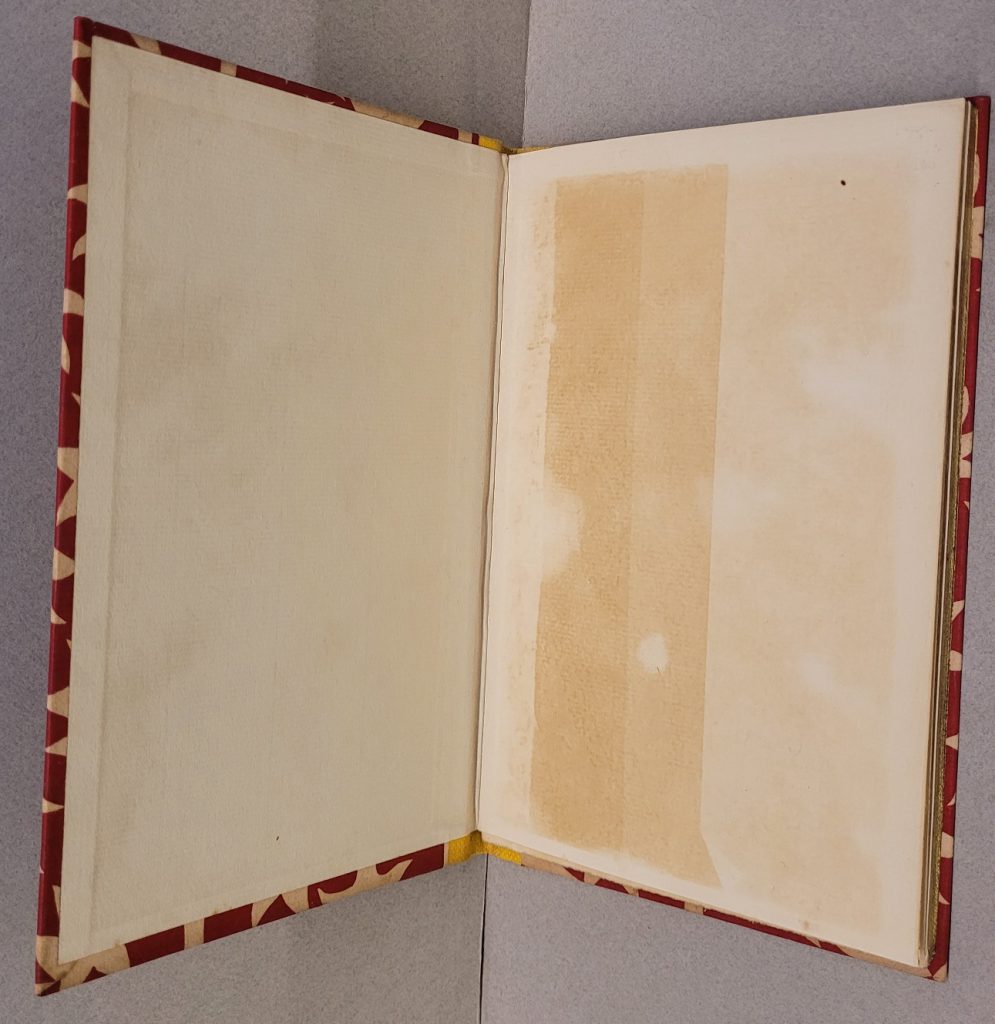Robert Gibbings’ nearly wordless novel, The 7th Man, tells the tale of a shipwrecked sailor’s survival on a Pacific island; as told to Gibbings by the sailor’s grandson while in Tahiti.

Full Title: The 7th Man: A True Cannibal Tale of the South Sea Islands Told in Fifteen Wood-Engravings and Precisely One Hundred and Eighty Nine Words
There can be no doubt that Gibbings was aware of wordless novels published by European artists at the time. It is my assumption that Gibbings was gently mocking the genre by referencing “precisely189 words”.
This is a fanciful tale of a sailor saved from cannibals by the love of the king’s daughter.
In 1928 Gibbings flippantly wrote to publishers Houghton and Mifflin with the idea that they should fund a trip for him to the South Pacific to which they, surprisingly, agreed. So at a very busy time at the Golden Cockerel Press, Gibbings left Moira (his wife) ‘holding the baby’, in more ways than one, and boarded a ship to Tahiti. The publishers instructed Gibbings to seek out and collaborate with the American author James Norman Hall (1887-1951) who had lived in Tahiti since 1920. Gibbings spent four months on the island and became fast friends with Hall who never actually wrote any text for Gibbings’ illustrations. In the end Gibbings wrote, illustrated, and published this book, The 7th Man, with fifteen wood engravings and ‘precisely one hundred and eighty nine words’. It tells the tale of a shipwrecked sailor’s survival on a Pacific island; as told to Gibbings by the sailor’s grandson while in Tahiti.
as per Swan’s Fine Books
- Title: The 7th Man: A True Cannibal Tale of the South Sea Islands Told in Fifteen Wood-Engravings and Precisely One Hundred and Eighty Nine Words
- Author and Illustrator: Gibbings
- Date of publication: 1930
- Publisher: Golden Cockerel Press
- Place of publication: Waltham Saint Lawrence, Berkshire
- Printer: A. C. Cooper
- Copyright: artist?
- Dimensions: 7 3/4 in. x 5 in.
- Dust jacket: No
- Slipcase: I have seen one copy sold with a slip case but suspect the case was made at a later date.
- Binding: hard cover
- Language: English titles, etc
- Paginated: yes
- Printed: verso and recto
- Edition: limited to 500 numbered copies, no trade book issued
- Printed from the original matrix: I believe so
- References: Cave; Manson, 72; Chanticleer, 72
- Description:
- Quarter yellow buckram strip carrying gilt title on spine
- red and cream paper boards with a palm tree and skull design on the boards;
- top and fore edges gilt
- bottom edge untrimmed BUT several dealers list saying all edges gilt
- Printed on Dutch hand-made laid paper (Van Gelder Zonen), set in Caslon Old Face type.
- 17 wood engravings (including title page and colophon)
- (8), 14, [10] pp. Or pagination [i-iii] 1-15 [1, colophon].
- small illustration on title page and colophon

Frequently the end papers are very toned ie a reaction to the glue for the paste down?


“Seventh” on the spine



COMMENTS
If you disagree with something on this page, have an improvement, or have a comment please contact me
wn at wordlessnovels.com
Any information used will be given a credit line.